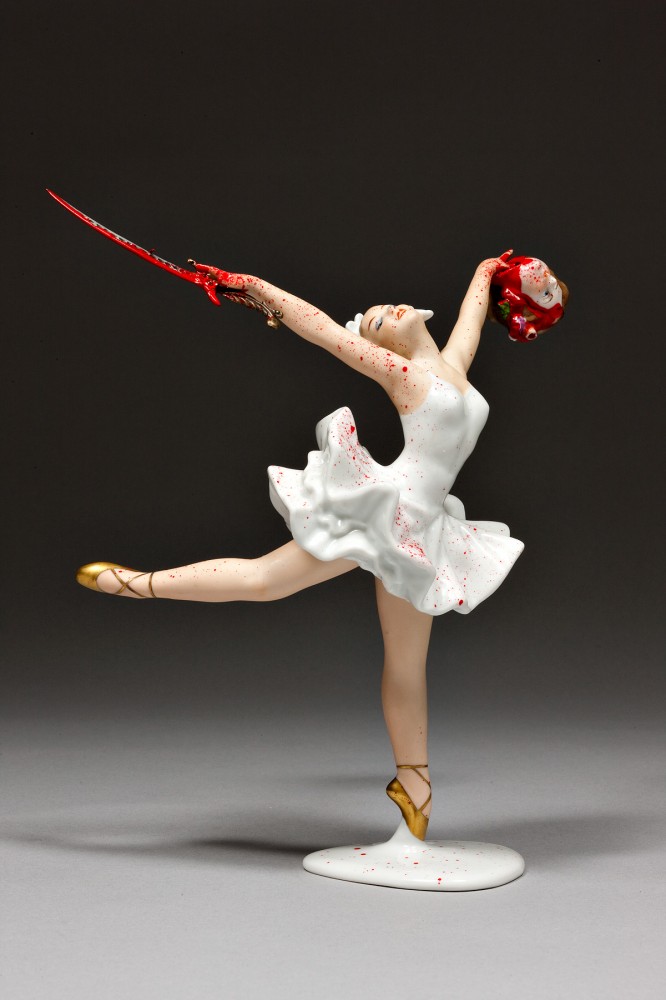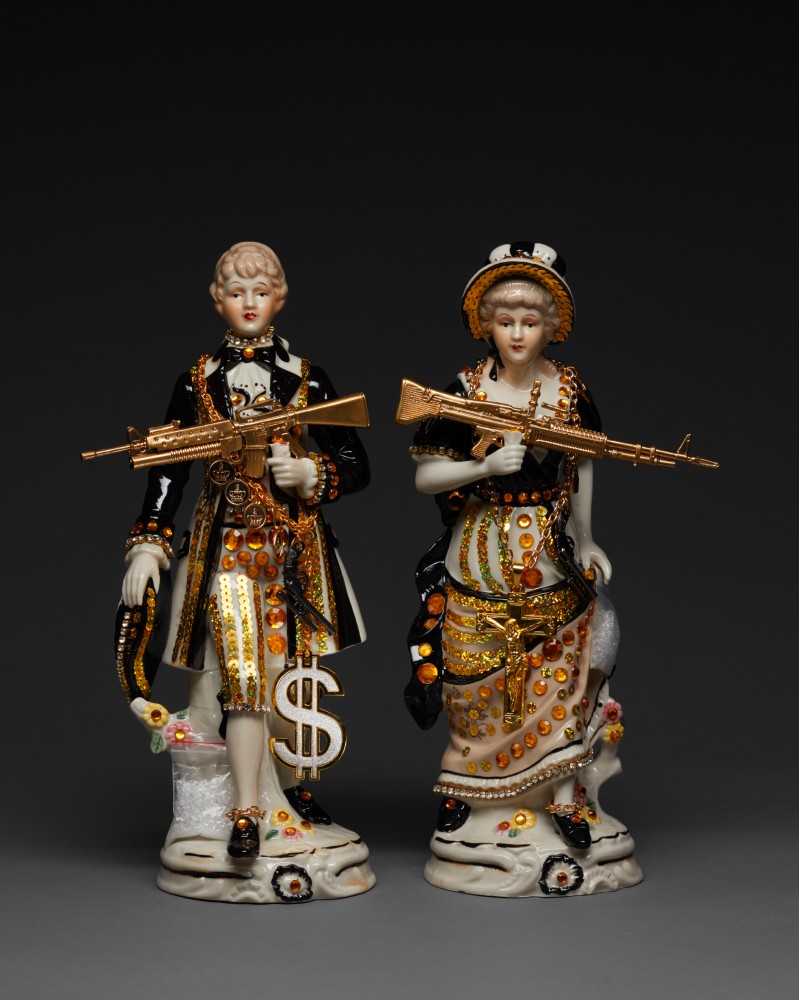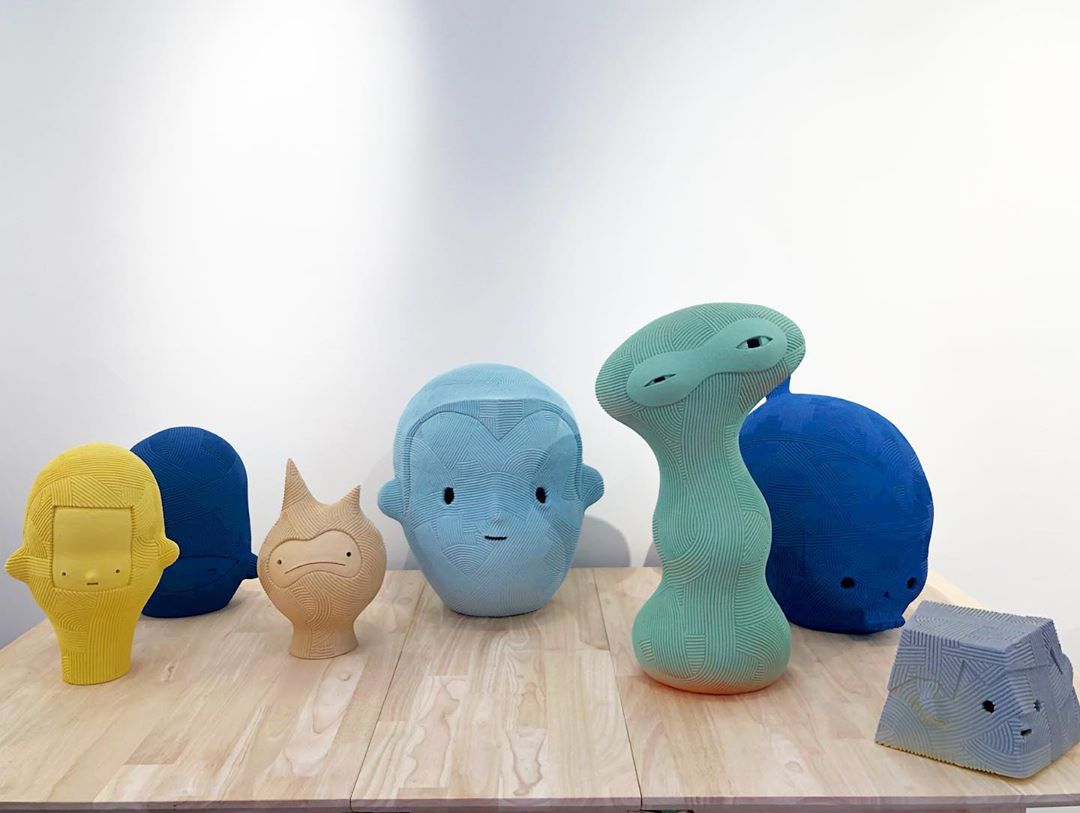
Sculptor and ceramics artist Johnson Tsang, based in Hong Kong, creates surreal, spellbinding faces in porcelain. Dramatic and often humorous, these characters are warped in varying emotions, whether it’s a distorted, yet intimate kiss, total relaxation while being massaged, or contorted far behind comfort. Two series from this year, “Lucid Dream” and “Stillness,” show just how wide-ranging the artist’s imagination can be, all using the human face as its foundation.
Tsang’s work last appeared on cctvta.com here.





“Stillness” is the newer series, and it was recently featured in the conference Ink Asia 2016 in Hong Kong. These works are some of his most kinetic yet, with porcelain splashes and collision putting the works at odds with one another. Here, it’s the artist’s knack for realism that makes the liquids and extend beyond the wall.





Tsang’s pieces have been exhibited across the world, from U.S. and Denmark to Korea and his native China. His several awards include the “Special Prize” of “Korea Gyeonggi International Ceramix Biennale 2011 International Competition” and “Grand Prize” of “2012 Taiwan International Ceramics Biennale.” (He’s the first Chinese artist to nab these two awards.)






 The remixed and altered porcelain sculptures of ceramicist Penny Byrne often have a political edge. Byrne's methods recall the methods of Barnaby Barford and the late Click Mort. She uses enamel paints, epoxy resin, putty, and other materials to evolve these found statues.
The remixed and altered porcelain sculptures of ceramicist Penny Byrne often have a political edge. Byrne's methods recall the methods of Barnaby Barford and the late Click Mort. She uses enamel paints, epoxy resin, putty, and other materials to evolve these found statues. Chinese artist Li Xiaofeng uses broken slivers of porcelain found at archaeological sites to create original costumes he calls "rearranged landscapes" for their ability to tell a story. To create his wearable works, Xiaofeng shapes and polishes found shards of porcelain from the Song, Ming, Yuan and Qing Dynasties. He drills holes into the pieces and loops them together with a silver wire to create traditional Chinese dresses, jackets and military uniforms.
Chinese artist Li Xiaofeng uses broken slivers of porcelain found at archaeological sites to create original costumes he calls "rearranged landscapes" for their ability to tell a story. To create his wearable works, Xiaofeng shapes and polishes found shards of porcelain from the Song, Ming, Yuan and Qing Dynasties. He drills holes into the pieces and loops them together with a silver wire to create traditional Chinese dresses, jackets and military uniforms. In En Iwamura’s recent show at Ross+Kramer Gallery's East Hampton venue, the artist explores the concept of “Ma,” a philosophical Japanese concept focusing on spatial awareness between entities. His vibrant creations, with their distinct structure and playfulness, give viewers the chance to consider Ma with his creatures.
In En Iwamura’s recent show at Ross+Kramer Gallery's East Hampton venue, the artist explores the concept of “Ma,” a philosophical Japanese concept focusing on spatial awareness between entities. His vibrant creations, with their distinct structure and playfulness, give viewers the chance to consider Ma with his creatures.